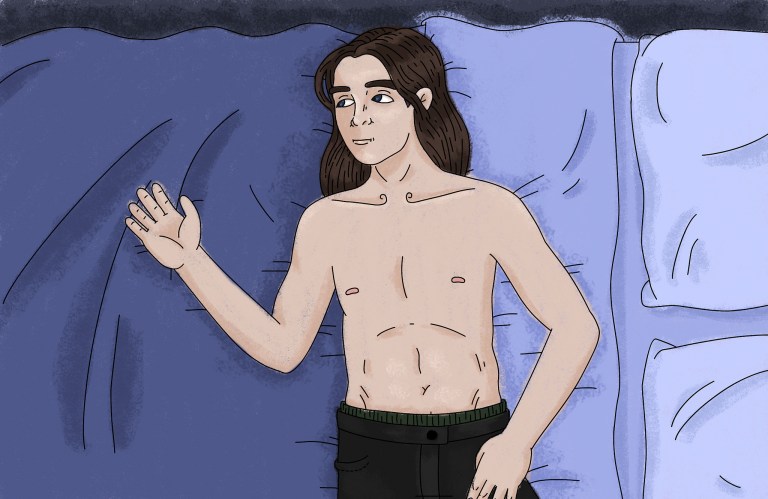Most Depressing WiFi Hotspots in Baltimore, MD
“I was on the way to meet my study group, like, walking the same way I always do, when it just came over me: I needed to die. I’ve never really felt that before, with that kind of clarity. When I got to the lab I was the only one getting WiFi. I’m actually still…
By Megan Boyle


Stingray Tank at the Baltimore Aquarium
Aquarium volunteers have discerned that organisms accessing WiFi from within the tank to 10 feet from its perimeter (the “Hot Zone”) assume markedly grayer complexions as they semi-consciously pick their scabs, eventually ceasing all motion except to faintly urge the mouse onward in destructive internet behaviors such as Googling ex-lovers, comparing oneself to Facebook photos of ex-lover’s new-lovers, compiling clips from 3-5 porn sites into a master playlist only to watch them and feel un-aroused, and conduct hour-long searches for “This one flash game I played in high school where cute-looking chickens caught umbrellas” – once finding it, trying for 5 minutes to unsuccessfully complete level 1 before realizing a nearly paralyzing, language-halting sense of purposelessness seems to be the only answer to the question “What am I going to do now?”

This Tree
In a 2011 study conducted by the Sub-Arboreal Depression Awareness Study Services for Tree-Rallying Ecological Enterprises (S.A.D.A.S.S.T.R.E.E.) those who sat within a 3-foot radius of this tree, which receives exceptionally clear WiFi, all sensed within 10 minutes that they were being used as platforms to endure unsolicited complaints about unsolvable existential issues, though no one could discern the source of this feeling. A more thorough, unbiased investigation from the Greater Baltimore Botanical Association found that this tree has an advanced neurological communication center that essentially mimics the structure of America’s 4G network. During photosynthesis, the tree’s complaints (which are believed to be products of a chlorophyll mutation) are released as waste products, along with oxygen, into the atmosphere.

Hovering 12” x 12” Area
This perpetually in-motion, cubic, invisible mass has been hovering at random intervals over patches of Baltimore city streets since, reportedly, the creation of WiFi—though it’s been suggested that like the Northern Lights, its patterns and onset more closely follow solar wind storms than wireless networks. Areas affected by the hovering area comprised the entire “Other” demographic in the 2010 Census, exceeding every socio-economic grouping for highest suicide rates. This means whoever is unlucky enough to stumble upon this 12” x 12” area will almost certainly commit suicide (though will be privy, some say, to unreasonably clear WiFi reception before dying). Recently doomed WiFi recipient and Johns Hopkins student, Josh Hosskins, describes his experience: “I was on the way to meet my study group, like, walking the same way I always do, when it just came over me: I needed to die. I’ve never really felt that before, with that kind of clarity. When I got to the lab I was the only one getting WiFi. I’m actually still going at 804.12g’s, woooo! [laughs] Anyways, I’m drowning myself tonight.”

My Bathtub
Navigating the internet from a steamy bathtub on a Friday night sounds blissfully domestic, and might be in perhaps any other bathtub in Baltimore. Acclaimed bathroom archaeologist Stan Metts has been researching the “Claw-footed Depression Demons” of the 6 East Read Street apartment building for, he said, “I don’t even know how long.” Although answering questions about the incidentals of one’s life with “I don’t know” usually solely indicates a polite desire for the conversation to focus elsewhere, something about the way Metts’ gaze became sharply glassy, and the surreal, almost David Lynchian tone our conversation assumed following his answer made me believe he honestly wasn’t sure when he became a bathroom archaeologist. I took it upon myself to investigate Metts’ career (often from my bathtub, because it receives outstanding WiFi) and it appears that his bathtub research not only pre-dates the construction of the 6 East Read Street apartment building–carbon dating suggests his papers are at least 6.3 billion years older than the planet Earth.

Steps outside Panera Bread, Inner Harbor
Though Panera Bread’s Wikipedia page boasts it to be the “largest free wireless network in the United States,” actually attaining WiFi inside Baltimore’s Inner Harbor location has proven nearly impossible, forcing dejected, bagel-wielding customers onto the steps for years. In 2004, particle physicist Clark Faviolla theorized the step’s impeccable WiFi could be attributed to light wave-interference from the high-density carbohydrates lurking inside Panera. Sadly, his studies, often conducted from the steps where he once famously camped out for 3 weeks to monitor WiFi conditions, were widely regarded as “pseudo-science bullshit” from his peers. Faviolla’s life then took on the familiar tragic narrative of the eccentric, obsessed genius–after losing his home and family, he began living on the steps and surviving on day-old pastries from the dumpster, where he was able to mentally hijack Panera’s WiFi to write a scathing Yelp.com review before vanishing, one employee said, “into thin air.” ![]()




